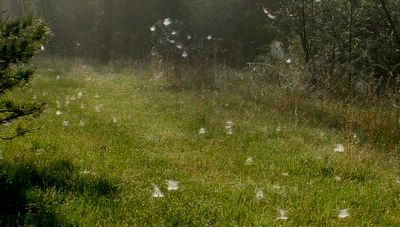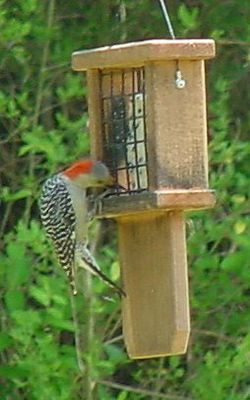Local bike shopHarris Cycleryhas begun carrying Moulton bicycles, and I had not seen one up close until now. They had a dove gray one in the window that called out to me, so I took it outside for a closer examination and test ride. Jon Harris then brought out another Moulton - one of his personal bikes made in the 1960s, that had once belonged to Sheldon Brown. It was informative to see the two models side by side.
The new Moulton is the TSR 9 model, manufactured by Pashley-Moulton.
Moulton bicycles have a complicated history. Production initially began in 1962, then ceased in the 1970s and resumed in the 1990s - with some models produced under license byPashley.
This bicycle has a Moulton headbadge on the head tube and a Pashley headbadge on the seat tube.
The frame design is called a space frame, and it allows for greater rigidity and lighter weight in comparison to traditional steel frames.
Moultons are not folding bicycles, but are "separable" and can be disassembled for travel.
In addition to their unique geometry and small wheels, Moultons are distinguishable by their suspension system - which they had originally implemented decades before it would become common.
Components on the Pashley-Moulton models are modern and off-the-shelf, which keeps the price "reasonable" (this one is just over $2,000) compared to the higher-end models.
My impression of the space-frameMoulton is somewhat confused.I find it architecturally interesting and beautifully constructed. However, I do not quite understand what makes it a good bicycle.I mean, is one expected to buy it because it is unusual looking and has a cool history, or does it have unique characteristics that make it superior to other bicycles? By moderns standards, it is not a lightweight bike by any means (26 lb without pedals), which somewhat defeats the small wheel construction. And the complicated frame structure - while beautiful to look at - makes me worry that I'll get my foot stuck somewhere in there while attempting to step over it. It just doesn't seem like a very practical design to me. Also, to my eye the handlebar set-up on thismodel clashes with the frame, and it seems to me that some effort could have been made to keep the price down while finding more elegant components.
I tried to ride the bicycle, but the front suspension felt so powerful that I did not feel comfortable test riding it in the winter. The Co-Habitant rode it briefly and did not feel stable on it, which may have to do with the suspension as well - neither of us is used to it. The conditions on this day were not ideal for properly test riding bikes, so I'd like to try it again when it gets warmer. But on first impression, the Moultonspace frame bike did not feel entirely welcoming.
On the other hand, I was surprised by how friendly and accessible the vintage "F-frame" model felt in comparison. This is one of the original models, introduced in the early 1960s - the Major Deluxe. It came with a 4-speed hub, front and rear rack, and a large bag mounted on the rear. Here is a neat promotional video from when these bikes first came out.
Despite being somewhat heavier than the currently produced space-frame, I found the vintage f-frame easier to lift and carry.
The step-over is considerably lower as well. In other ways too, the vintage Moulton just felt like a better fit for my proportions; it felt very natural.
And of course the classic components are absolutely charming.
The North-roadish handlebars are more comfortable than the straight bars on the modern production bikes.
The fenders and racks are extremely useful, and the bag is huge. In essence, it is a small, practical bike - not as visually striking as the later space-frame, but more user-friendly.
I appreciated the opportunity to have a closer look at the Moultons, and would like to properly test ride the modern production bicycle once Spring arrives. While I can see myself owning and riding the vintage F-frame model, I findthe newer space-frame model intimidating and somewhat impractical, though visually compelling. Moulton owners and enthusiasts are welcome to contribute their impressions.





 The new 'green', energy efficient JVC II is architecturally designed to match its surroundings and the historical park style, referred to as 'Park Service Rustic'. The feeling of the building when you first enter is dictated mostly by the space, due to the height of the ceiling and massive windows that line the entirety of the wall, naturally lighting the surroundings. However, it could also have something to do with the weird climber want-to-be mannequin placed high atop the climbing display. A feeling of comfort is there too. Above you are post and beam rafters, held together with cast iron fixtures and signs made from a menagerie of dark metal and wood. Overall, I was impressed and I think the sentiment was shared by most.
The new 'green', energy efficient JVC II is architecturally designed to match its surroundings and the historical park style, referred to as 'Park Service Rustic'. The feeling of the building when you first enter is dictated mostly by the space, due to the height of the ceiling and massive windows that line the entirety of the wall, naturally lighting the surroundings. However, it could also have something to do with the weird climber want-to-be mannequin placed high atop the climbing display. A feeling of comfort is there too. Above you are post and beam rafters, held together with cast iron fixtures and signs made from a menagerie of dark metal and wood. Overall, I was impressed and I think the sentiment was shared by most.  winter/holiday break from December 20th through January 4th. And as has been the tradition up at Paradise for many years, Ranger-led snowshoe walks will begin at the new JVC (snow permitting) on December 20th. The two public walks (12:30, 2:30) are approximately 1.5 miles in duration and last less than two hours and are moderate to strenuous. The walks are an amazing opportunity to experience the Park and Mountain in the wintertime. The adjacent photo was taken this past winter as I was returning from one of my group snowshoe walks - a beautiful view of the old JVC at sunset.
winter/holiday break from December 20th through January 4th. And as has been the tradition up at Paradise for many years, Ranger-led snowshoe walks will begin at the new JVC (snow permitting) on December 20th. The two public walks (12:30, 2:30) are approximately 1.5 miles in duration and last less than two hours and are moderate to strenuous. The walks are an amazing opportunity to experience the Park and Mountain in the wintertime. The adjacent photo was taken this past winter as I was returning from one of my group snowshoe walks - a beautiful view of the old JVC at sunset.

 For all of you landscape contractors that are looking for consistency and quality in large, containerized trees, look to Casey Nursery in Goldsboro, North Carolina. These trees, in 15 and 25 gallon pots, are specimen plants.
For all of you landscape contractors that are looking for consistency and quality in large, containerized trees, look to Casey Nursery in Goldsboro, North Carolina. These trees, in 15 and 25 gallon pots, are specimen plants. They have the well-developed canopies of field-grown trees with the convenience of container-grown trees. It's a hard-to-find combination.
They have the well-developed canopies of field-grown trees with the convenience of container-grown trees. It's a hard-to-find combination.
 There were three men (actually four, another has been found) with the name of Jacob Switzer who resided in Columbiana County, Ohio during the 1805-1860 time period. This estate file is for the Jacob Switzer who is my 4th great-grandfather and who married first Catherine Brinker (in 1811, the mother of his children) and second Leathy Bricker (in 1853). Jacob died on November 2, 1859.
There were three men (actually four, another has been found) with the name of Jacob Switzer who resided in Columbiana County, Ohio during the 1805-1860 time period. This estate file is for the Jacob Switzer who is my 4th great-grandfather and who married first Catherine Brinker (in 1811, the mother of his children) and second Leathy Bricker (in 1853). Jacob died on November 2, 1859.










